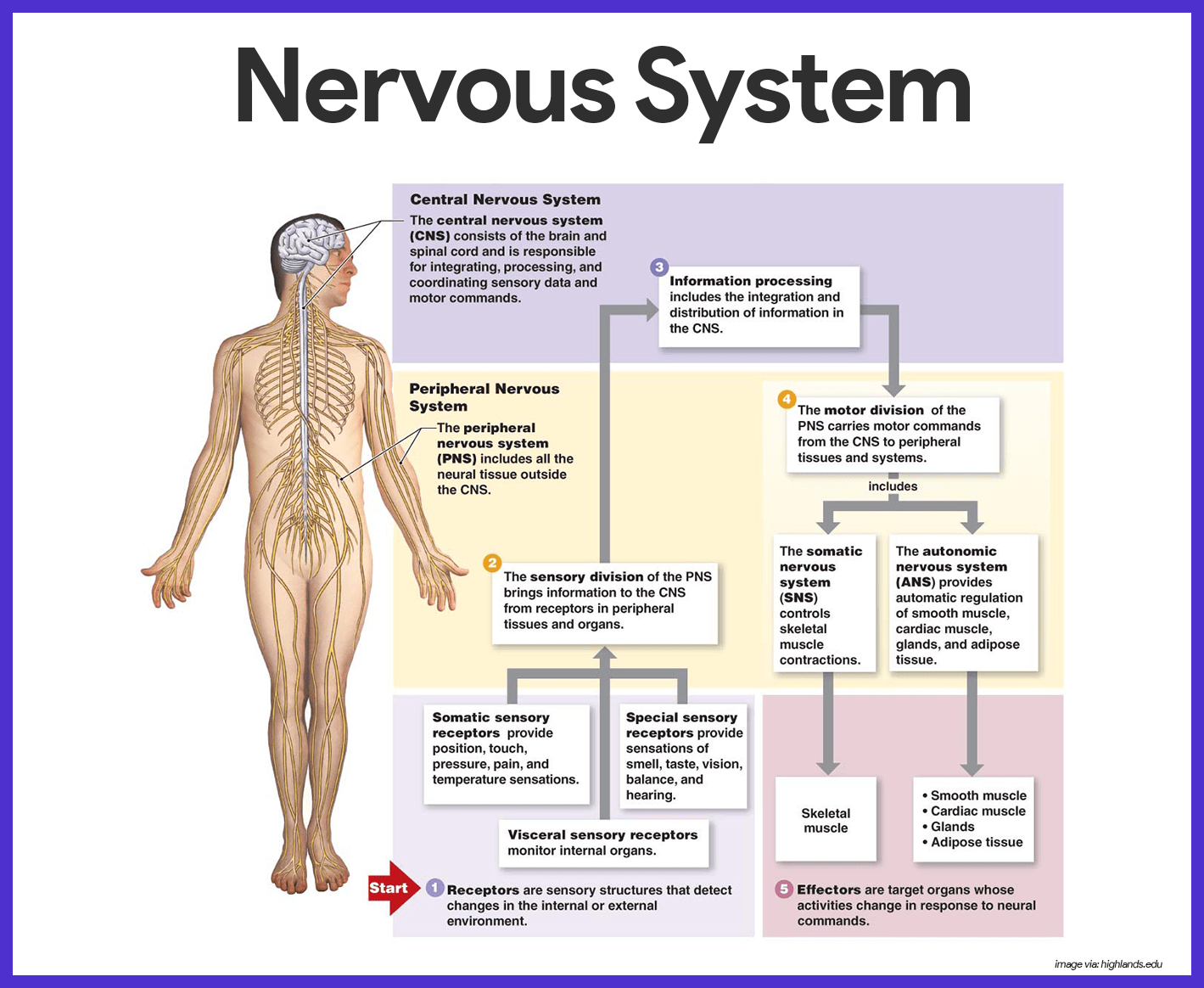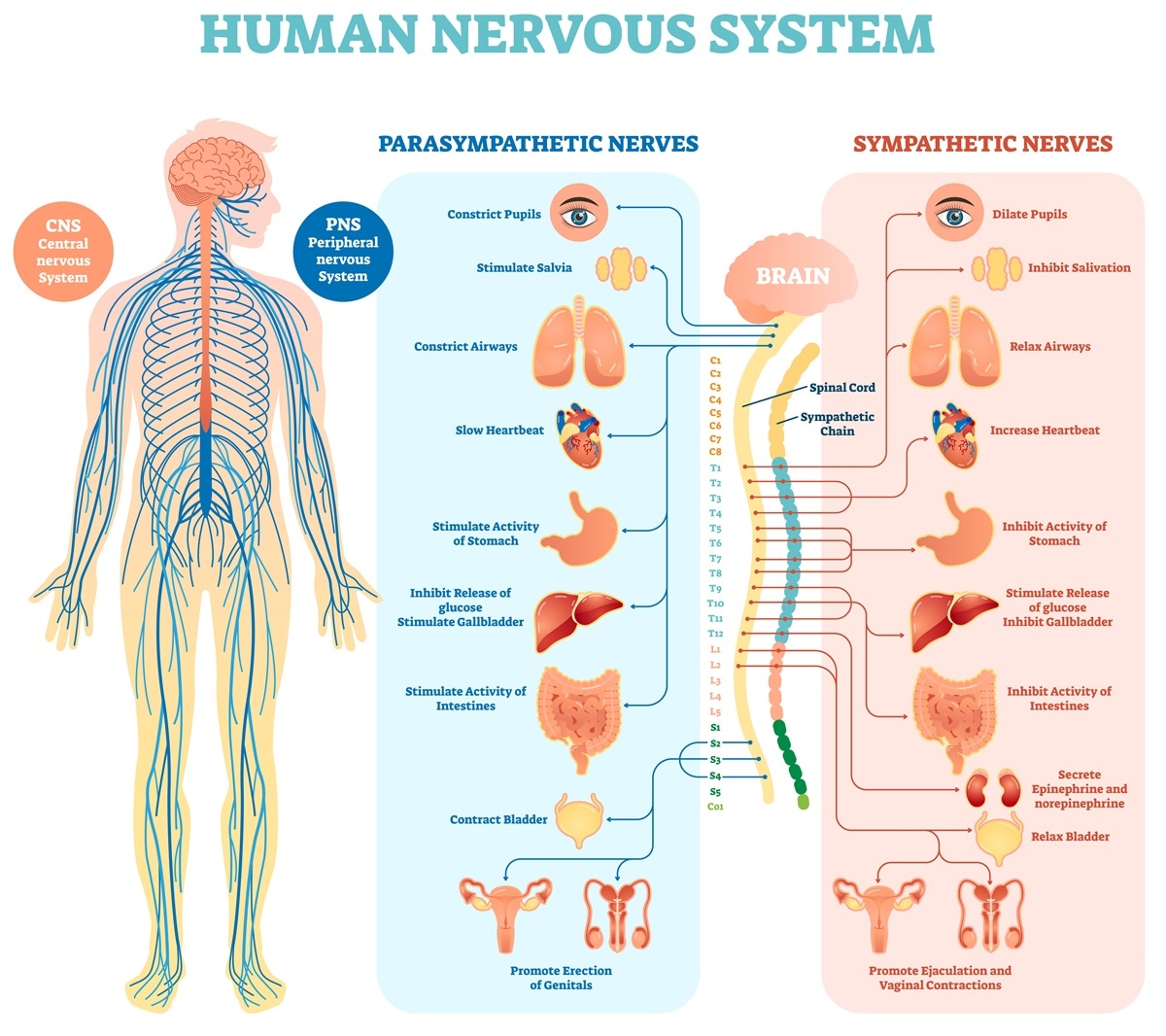Which Term Best Describes the Organization of the Nervous System
The nervous system is responsible for supporting the body. Consists of the brain and spinal cord.
Which term best describes an organic organization.

. Organized into two primary subdivisions The central nervous system and the peripheral nervous system. The central part makes upthe brain and the spinal cord while the periphery. Will upvote if informative ty best describes why plasma proteinscan function as buffersa.
The part of the autonomic division of the nervous system that acts to prepare the body for action in stressful situations engaging all the organisms resources to respond to a threat is known as the. Neurons the signaling units and glial cells the supporting units. Which term BEST describes the organization of the nervous system.
Which statement BEST describes the function of the nervous system. Which best describes the function of the nervous system. 32 32 Which of the following terms best describes the flow of signals through the autonomic nervous system.
B The term Motor nerves is another name for an afferent nerve. The nervous system commands muscles controls the functioning of all organs and provides information about the outside world through sensory information. It processes many different kinds of incoming sensory information.
Central nervous system CNS peripheral nervous system PNS. However nervous system function is mostly a story of the. Part D- Organization of the Sympathetic Nervous System The divisions of the autonomic nervous system are distinctly organized.
The terms hierarchical pyramid-shaped and fixed all correlate with a mechanistic organization so each of these choices is incorrect. An intricate network of billions of neurons and even more neuroglia. The sympathetic nervous system is responsible for how your body reacts to danger and is also responsible for the fight or flight response.
The central nervous system and the peripheral nervous system. A afferent B integration C efferent D sensory 33 33 of the following which is NOT a property of smooth muscle. It acts as control center for the entire nervous system Processes and integrates sensory information.
Start studying Organization of the Nervous System. Describe the organization of the nervous system according to morphology and functions. Ovoid helper cells that secrete CSF best describes which type of glial cells a ependymal b microglial c.
From an anatomical point of view we distinguish. Solution for Describe the organization of the nervous system according to morphology and functions. It is responsble for calming the body down after the danger has passed.
The parasympathetic nervous system is responsible for maintaining homeostasis. Place the term into the bin that best describes its location. The nervous system is responsible for sending and receiving signals.
I hope this helps you out. The nervous system is comprised of an enormous number of cells over 100 billion primarily of two types. Organized into two main subdivisions.
The peripheral nervous system can be further divided into the autonomic system which regulates involuntary actions and the somatic system which controls voluntary actions. It receives each min-ute literally millions of bits of information from the differ-ent sensory nerves and sensory organs and then integrates. Organization of the Nervous System.
A slower-acting myosin-ATPase B no sarcomere-like arrangement of filaments calclum-troponin binding required D IP3. Describe the sensory function. The nervous system coordinates voluntary and involuntary actions in the body by sending and receiving information.
C The spinal cord processes and modifies nerve impulses between brain and peripheral nerves. The fight-or-flight response associated with the division. Flexibility is the key to an organic organization making that choice correct.
It is the seat of the intellectual faculties. 1 regulates heart rate and blood pressure 2coordinates body function by transmitting signals to and from sensory organs and the brain 3 regulates the amount of energy the body needs to carry organ system functions 4 coordinates body function. View Available Hint s Reset Help Short preganglionic fiber Long preganglionic fiber Long postganglionic fiber Chain ganglia Thoracolumbar origins Vagus nerve CN X Ganglia within.
In vertebrates the part of the nervous system comprising the brain brainstem and spinal cord. Organization of the Nervous System Basic Functions of Synapses and Neurotransmitters The nervous system is unique in the vast complex-ity of thought processes and control actions it can per-form. The peripheral nervous system comprises of sensory neurons groups of neurons called ganglia and nerves associating them to one another and to the central nervous system.
Linear hierarchical random disconnected. The nervous system has tissue that connects the body parts. The nervous system is responsible for eliminating waste.
The nervous system is made up of two distinct parts called thecentral and periphery nervous systems. 7 Which of the following best describes organization of the nervous system. Learn vocabulary terms and more with flashcards games and other study tools.
The human central nervous system contains the cerebrum spinal line and retina. A The central nervous system only includes the brain. Organization of the Nervous System.

Basic Structure And Function Of The Nervous System Anatomy And Physiology I


No comments for "Which Term Best Describes the Organization of the Nervous System"
Post a Comment